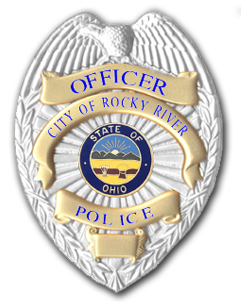Rocky River Police Officers are available to help with the installation of Child Safety Seats in your vehicle.
Two Rocky River Police Officers are Certified Child Passenger Safety Technicians. They are available by appointment to assist in the proper installation of a child safety seat.
For an appointment please contact Ptl. Rich Bird at rbird@rrcity.com
or 440-799-8210 or Sgt. Stephanie Troha at stroha38@rrcity.com or 440-799-8227.
History of Child Safety Seats
The first child seats for the purpose of enhancing child safety in motor vehicles were introduced in the 1960's after the Physicians for Automotive Safety was formed. In 1971, the National Highway Traffic Safety Administration implemented the first child safety seat standards, which included that the seat be held to the vehicle using a safety belt and that a separate harness hold the child in the car seat. The standard was updated in 1981 to include requiring rear-facing child seats for infants and young children and front-facing seats for children under fifty pounds. About the same time, states began to introduce their own child passenger safety laws. After a study in 1985 indicated that up to 65% of child safety seats were not being used properly, NHTSA launched the National SAFE KIDS campaign with the goal of improving child passenger safety. After thirty years, the combined efforts of NHTSA, improvements in child safety seat design, and the implementation and enforcement of child seat laws, the number of child deaths and injuries as a result of motor vehicle accidents have dropped significantly.
Using child safety seats and conventional seat belts properly reduces the risk of injury and death in motor vehicle accidents.
Proper car seat use reduces the risk of death to infants (less than 1 year) involved in motor vehicle accidents by 71%
Proper car seat use reduces the risk of death to toddlers (1 to 4 years old) involved in motor vehicle accidents by 54%.
Booster seat use reduces the risk of serious injury to children aged 4 to 8 years by 45% compared to the use of a seat belt alone.
Proper seat belt use by children over 8 years old reduces the risk for death and serious injury by about half.
In five states that increased the age of car seat/booster seat use to 7 or 8 years old, the rate of children using the seats increased nearly 300% and the rate of children who were killed or suffered incapacitating injuries was reduced by 17%.
Ohio Child Safety Seat Laws
Ohio's Child Passenger Safety Law is defined in section 4511.81 of the Ohio Revised Code and requires the following:
Children less than 4 years old or 40 pounds must use a child safety seat meeting federal motor vehicle safety standards
Children less than 8 years old, unless they are at least 4 feet, 9 inches tall, must use a booster seat
Children ages 8-15 years old must use a child safety seat or safety belt anywhere in the car.
Child Safety Seat Guidelines for Parents and Caregivers
Ohio's Child Safety Seat Laws provide a minimum amount of protection for children in motor vehicles. The following guidelines will ensure your child or a child passenger in your vehicle is as safe as possible.
Children should be properly buckled into a car seat, booster seat, or seat belt as is appropriate for their age, height, and weight.
Infants from birth until age 2 (or until they reach the upper weight limit for their car seat) should be buckled in a rear-facing car seat, in the back seat.
From age 2 until at least age 5 (or until they reach the upper weight limit for their car seat), children should be buckled in a forward facing car seat, in the back seat.
After age 5, children should be buckled in a booster seat to ensure the car safety belt fits them properly. A proper fit is when the lap belt lays across the upper thighs (not across the stomach) and the shoulder belt lays across the chest (not the neck). Children are always safer in the back seat.
Children no longer need a booster seat when the car seat belt fits them properly, as described above. Even when a booster seat is not needed, children are safer in the middle of the back seat.
Car seats should be used in accordance with the manufacturer's recommendations.
Children under 12 should never be seated in a seat with a front airbag. Front airbags can kill young children. Never place a rear-facing car seat in front of an airbag.
Parents and caregivers should set the example by always wearing a seat belt!
What is a Child Passenger Safety Technician?
Child Passenger Safety Technicians have been trained to provide parents and caregivers hands-on assistance with the proper use of child restraint systems and safety belts. Safe Kids Worldwide is the certifying body for the National Child Passenger Safety Training program. Anyone can become certified to become a child passenger safety technician!



